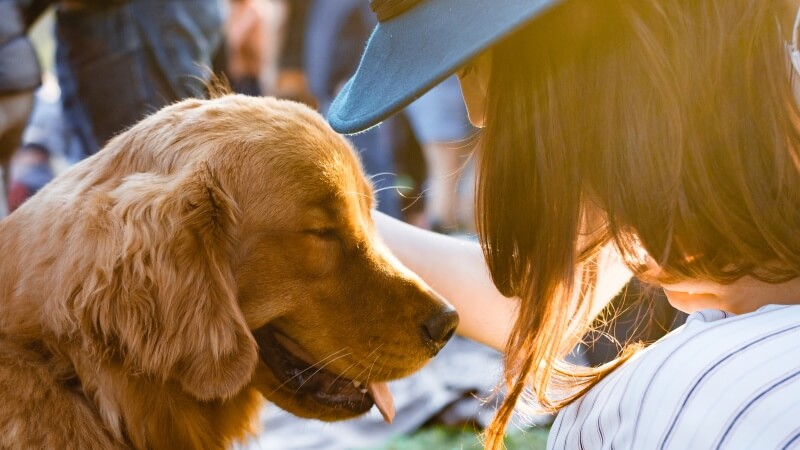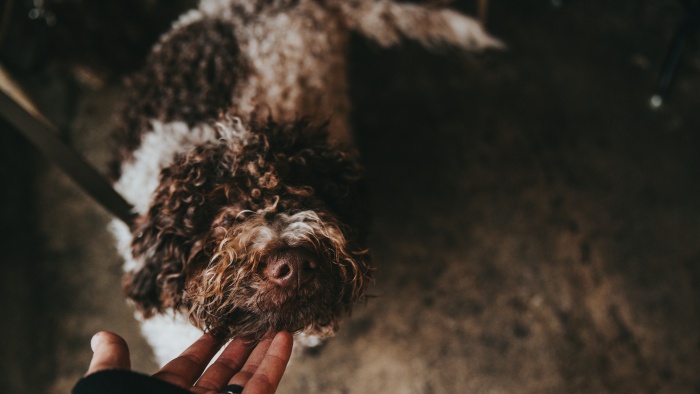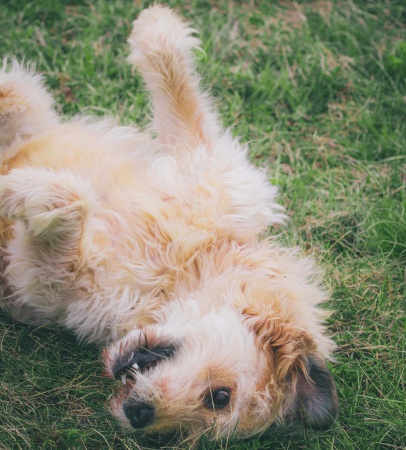Where Do Dogs Like To Be Pet:6 Places And Precautions

Where do dogs like to be pet? Many dogs just adore receiving affection, and as enthusiastic petters, it’s one of life’s most rewarding experiences.
Witnessing their contented expressions and the bliss they feel when we provide those soothing, oxytocin-releasing strokes is often the pinnacle of being a dog owner or pet parent. However, are you aware of your dog’s preferred petting spots?

In this article, we delve into whether dogs enjoy being petted (prepare for a surprising revelation: not all do), the specific areas they prefer for stroking, the appropriate ways to caress your dog, and whether there are places they might not appreciate being touched.
Is petting enjoyable for dogs?
It varies among canines; some absolutely relish being petted, while others may not be as fond of it. This difference often stems from each dog’s history with being handled and stroked, coupled with their unique personality. Additionally, breed characteristics can play a role, as certain breeds may find petting more pleasurable than others.
When you pet a dog, oxytocin, often termed the ‘love hormone,’ is released. This hormonal release typically makes dogs enjoy being stroked, and we humans derive great enjoyment from petting them. The act of stroking and the accompanying oxytocin release strengthens the bond between you and your dog, providing mutual joy and satisfaction.
For some dogs, especially those from rescue backgrounds or those who have had negative handling experiences, becoming comfortable with petting may take time. It’s crucial to approach these dogs gently and at a pace they find comfortable, ensuring the experience is rewarding for them.
Preferred petting spots for dogs
Every dog has their favorite spots for petting, places that when stroked, trigger the release of oxytocin, providing a delightful sensation for them. Here are six prime areas where dogs typically love to be petted. Try these out and see which one your furry friend enjoys the most.
- Chest Area
The chest is an ideal spot for petting, especially in those little dips on their chest. Dogs have substantial muscles here, so a firm, massaging touch is often appreciated. It’s a non-threatening area for petting, giving the dog space and clear visibility of your actions. - Ears
Gentle, prolonged strokes on their soft, beautiful ears are usually a hit with dogs. The ears are thinly skinned, rich in blood vessels and nerves, making them highly sensitive. Stroking here can release endorphins, bringing comfort and pleasure to your dog.
Wondering about trimming your dog’s inner ear hair? Find out if it’s necessary.
- Shoulders
Dogs often carry tension in their shoulders, similar to humans. Slow, firm strokes in this area can help them unwind. This spot may also need attention if your dog wears a harness that rubs against it, making petting and massaging here particularly welcome. - Base of the Tail
The area at the base of the tail, or its equivalent in breeds without a tail like the French Bulldog, is a fantastic spot for a stroke, scratch, or rub. This action might even trigger the delightful back leg kick as they relish the sensation. - Under the Chin
Scratches under the chin are often favored by dogs. This position allows them to gaze up into your eyes, potentially releasing more oxytocin and enhancing their pleasure. - Neck Region
The neck is another popular area, especially as it’s where they usually wear a collar and tag. This can lead to muscle soreness or compressed fur, so strokes, scratches, or massages here can be particularly soothing.

Guidelines for stroking your dog
Petting your dog is not only a way to display affection but also a pleasant activity for us. There are several methods to pet or stroke your dog. Why not experiment with a few to discover what your dog prefers? Their response and body language will be a clear indicator of their enjoyment.
Consent test
A reliable method to gauge if your dog enjoys being stroked is the ‘Consent Test.’ Stroke them for a few seconds, then pause and withdraw your hand. If they approach you for more, it’s a positive sign they enjoyed the contact. This is especially helpful for shy or rescue dogs, aiding in trust-building. Learn more about interpreting your dog’s signals in our article on puppy body language.
Ear sliders
Gently slide your fingers along your dog’s ears, moving from the base to the tip. This technique, part of the Tellington Touch method, involves a series of strokes that dogs find relaxing, helping to reduce stress and arousal.
Zig Zags or ‘Zebra Touch’
Spread your fingers and make slow Zigzag motions along your dog’s body. This is another Tellington Touch technique, known for its soothing effect on dogs.
Circular chest massages
Performing slow, small circular motions on your dog’s chest can be very comforting, acting as a gentle massage. This type of petting is generally well-received by most dogs.
Understanding your dog’s petting preferences
While dogs are generally more tolerant than cats regarding where they like to be stroked, there are still specific areas they may not enjoy or might even dislike being touched, especially if they’re unfamiliar with the person.
Steer Clear of the Back Legs
Generally, dogs are not fond of having their legs touched or groomed, making this an unsuitable area for petting.
Tail Touching Should be Avoided
Most dogs do not appreciate their tails being stroked. This area is not only sensitive, but it can also be painful if pulled, considering its connection to their back.
Find out why dogs wag their tails
Be Cautious with Feet and Paws
Dogs, like humans, have sensitive feet and paws. While some may enjoy a foot massage, and it’s beneficial to get them accustomed to paw handling for nail clipping, generally, it’s not their preferred petting spot.
Avoid Patting the Top of the Head
Contrary to common practice, dogs usually don’t like having the top of their head patted. Approaching from above can be intimidating for them, as it obstructs their vision and prevents them from smelling the person’s hand.
Tummy Strokes Might Not Be Welcome
It’s a common misconception that dogs always love belly rubs. In reality, a dog rolling onto its back can be a sign of submission, indicating discomfort or a plea to stop, rather than enjoyment.
Petting your dog is a wonderful way to bond and show love, but it’s crucial to recognize their preferences and comfort levels. Paying close attention to your dog’s body language and signals helps you understand their preferred petting spots and avoid areas that might cause them discomfort or anxiety.

Recognizing your dog’s discomfort signals
While petting your dog is a joyful way to bond and express love, it’s equally important to recognize and respect their comfort levels. Dogs communicate discomfort or dislike for certain touches through various behaviors and body language. Understanding these signals helps ensure a positive and respectful interaction with your pet.
Behavioral Signs of Discomfort in Dogs
- Shrinking Away: If your dog moves away, turns their head, or tries to leave when you pet them, it’s a clear sign they are not enjoying the interaction.
- Vocalizations: Whining, growling, or other unusual sounds while being petted can indicate discomfort or anxiety.
- Tail Movement: Contrary to popular belief, not all tail wagging is happy. A stiff, slow wag, or a tail tucked under the body, can signify nervousness or unease.
How to Respond to Your Dog’s Discomfort
- Stop Petting: If you notice any signs of discomfort, the first step is to stop petting immediately. This shows your dog that you respect their boundaries.
- Give Space: Allow your dog to have some space to feel secure. Forcing interaction can increase their anxiety.
- Observe and Learn: Each dog is unique. Pay attention to your dog’s reactions over time to learn what they like and dislike.
By being attentive to your dog’s discomfort signals and responding appropriately, you create a trusting and respectful relationship with your pet. This not only ensures their well-being but also enhances the bond you share.
Conclusion
Where do dogs like to be pet? In summary, understanding your dog’s petting preferences is key to strengthening your bond. Every dog is unique, and recognizing their favorite spots as well as areas of discomfort ensures a more enjoyable and respectful interaction for both of you.
Additionally, consider using a harness for walks, as it offers comfort and security, especially for dogs who are sensitive around the neck and back.
Remember, always begin with gentle, slow strokes and maintain a calm tone of voice. It’s important to let your dog initiate the petting session, as this builds trust and comfort. By following these guidelines, you’ll create a positive and delightful petting experience, making your furry companion eager for more loving interactions.

